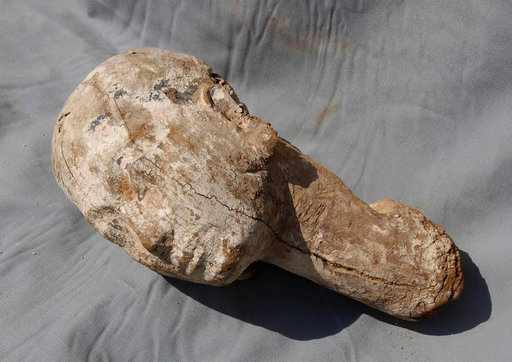Egyptian archaeologists have unearthed a significant artifact – the head of a wooden statue – believed to depict Ankhesenpepi II, a powerful female regent who ruled Egypt over 4,000 years ago. The discovery, announced by the Antiquities Ministry on Wednesday, sheds light on a pivotal period in Egyptian history.
The artifact was found in Saqqara, a necropolis near the famed Giza pyramids. While the head is in a fragile state, requiring restoration efforts, its identification with Ankhesenpepi II holds immense historical value.
Ankhesenpepi II served as regent during the early reign of her son, King Pepi II, who ascended the throne at a young age. Her crucial role in governing Egypt during this formative period for the young pharaoh cannot be overstated.
This discovery follows another exciting find at the same site earlier in October – a fragment of a pink granite obelisk belonging to the 6th dynasty, the era when both Ankhesenpepi II and her son Pepi II ruled. These successive discoveries paint a richer picture of this specific dynasty and the significant role women played in leadership positions.
The Ministry has not yet released details about the statue’s overall size or the materials used in its construction. However, the unearthing of the head alone offers a captivating glimpse into the past. With restoration underway, the hope is that the statue will eventually be displayed for the public to appreciate.
